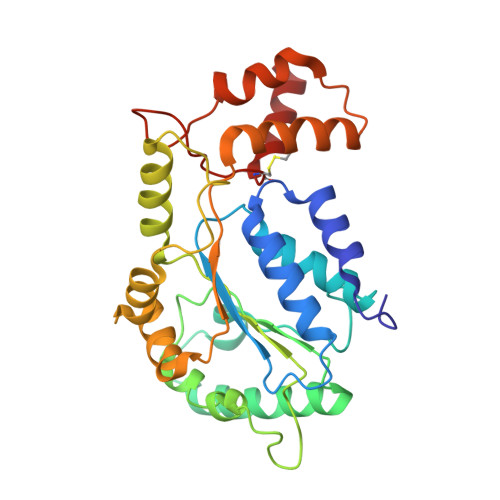The AAA + ATPase TorsinA polymerizes into hollow helical tubes with 8.5 subunits per turn.
Demircioglu, F.E., Zheng, W., McQuown, A.J., Maier, N.K., Watson, N., Cheeseman, I.M., Denic, V., Egelman, E.H., Schwartz, T.U.(2019) Nat Commun 10: 3262-3262
- PubMed: 31332180
- DOI: https://doi.org/10.1038/s41467-019-11194-w
- Primary Citation of Related Structures:
6OIF - PubMed Abstract:
TorsinA is an ER-resident AAA + ATPase, whose deletion of glutamate E303 results in the genetic neuromuscular disease primary dystonia. TorsinA is an unusual AAA + ATPase that needs an external activator. Also, it likely does not thread a peptide substrate through a narrow central channel, in contrast to its closest structural homologs. Here, we examined the oligomerization of TorsinA to get closer to a molecular understanding of its still enigmatic function. We observe TorsinA to form helical filaments, which we analyzed by cryo-electron microscopy using helical reconstruction. The 4.4 Å structure reveals long hollow tubes with a helical periodicity of 8.5 subunits per turn, and an inner channel of ~ 4 nm diameter. We further show that the protein is able to induce tubulation of membranes in vitro, an observation that may reflect an entirely new characteristic of AAA + ATPases. We discuss the implications of these observations for TorsinA function.
Organizational Affiliation:
Department of Biology, Massachusetts Institute of Technology, Cambridge, MA, 02139, USA.















